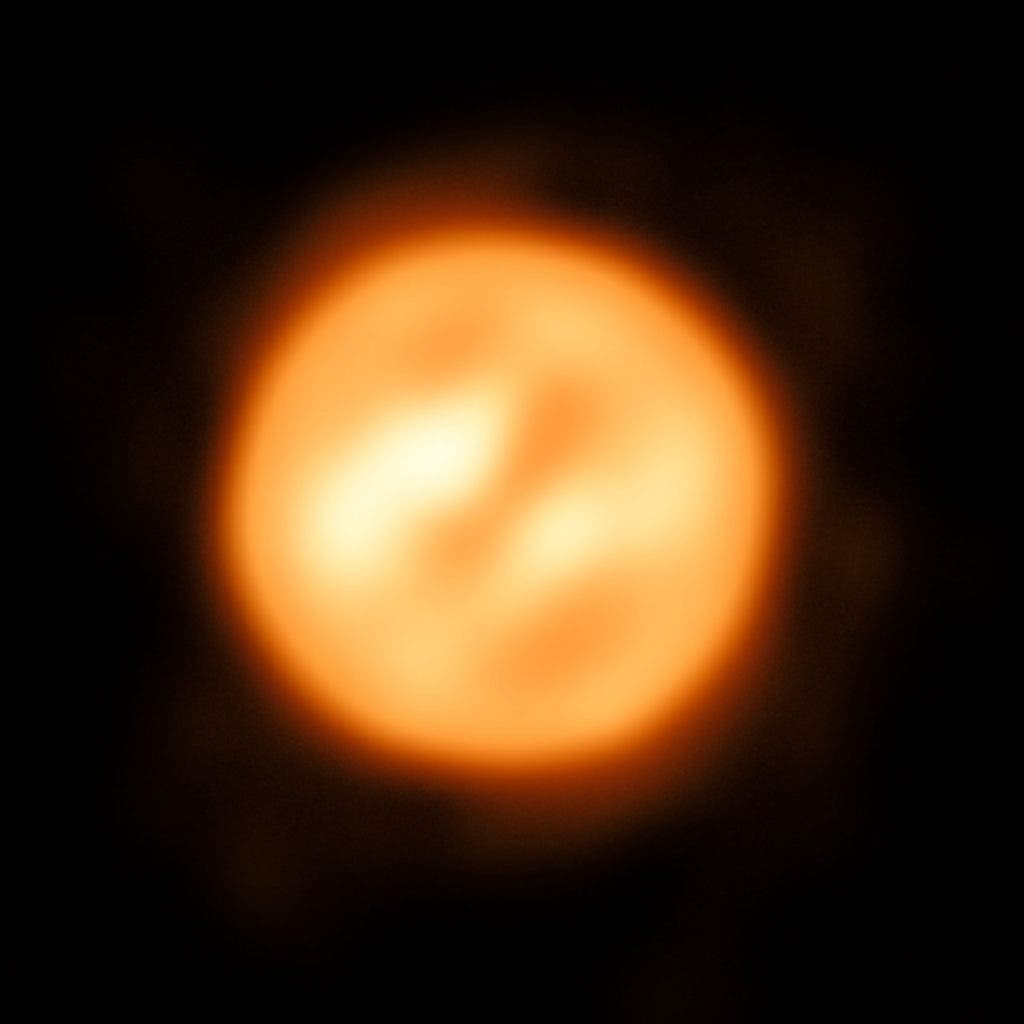From a whopping 620-light-years away, astronomers working with the European Southern Observatory imaged the red giant Antares in unprecedented detail. The quality is so striking one can easily distinguish turbulence in the alien star’s atmosphere.
Shine bright die fast
The fluffy-looking Antares is one of the biggest and brightest stars in the night’s sky and perhaps the whole galaxy itself. It’s red giant star, meaning a dying star in the last stages of stellar evolution. Any star will eventually reach this point — including our very own Sun seven billion years from now — once it runs out of fuel, namely hydrogen, and too much helium by-product builds up in the core.
Once a star exhausts this fuel source, it no longer has the outward light pressure to counteract the gravity pulling in on itself. And so, the star begins to collapse — but not before the star’s outer layers expand outward many times its original size.
Antares, for instance, is about 12 times more massive than our sun but a mind-blowing 700 times larger in diameter. Indeed, this is a big one, even by red giant standards signaling its final days as a star. In just a couple thousand years, astronomers believe it will come out with a bang once it explodes into a supernova.
While Antares might not be having its best days, astronomers here on Earth can only rejoice. Shining brightly in its last moments as a star, Antares gave instruments at the European Southern Observatory’s Very Large Telescope Interferometer (VLTI) in Chile the perfect chance to image a star in unprecedented detail.
This is essentially the first time we’ve been able to resolve details on the surface of an alien star beyond blurry yellow and red pixels. It’s so unprecedented that one would be forgiven for mistaking the photo for a clumsy shot of the sun made with an out of focus 200-dollar telescope.
Expanding to an early stellar grave
Beyond pretty pictures, Antares might help us fill the gaps in our knowledge. We don’t know for sure why red giants such as Antares lose so much mass during the final phase of their evolution, said Keiichi Ohnaka, of the Universidad Católica del Norte in Chile, who led the team of astronomers.
“The VLTI is the only facility that can directly measure the gas motions in the extended atmosphere of Antares — a crucial step towards clarifying this problem. The next challenge is to identify what’s driving the turbulent motions,” Ohnaka said in a statement.
This image of Antares was constructed out of multiple 2-D velocity maps of the star’s atmosphere. That is, this is not an optical observation or photo. These maps were based on infrared wavelength data collected by the VLTI with three of the Auxiliary Telescopes and an instrument called AMBER. By calculating the difference in velocity of the atmospheric gas at different positions on the sun, the astronomers could then assess the average speed over the entire star.
One surprising find was to see turbulent, low-density gas much farther from the sun than initially predicted. A currently unknown process related to red giant expansion might be responsible for this effect, the scientists reported in their paper.
Now, Ohnaka hopes his colleagues’ method can be employed to image other stars. The more, the merrier — that is, the more data astronomers will have to uncover hidden processes.
“In the future, this observing technique can be applied to different types of stars to study their surfaces and atmospheres in unprecedented detail. This has been limited to just the Sun up to now,” concludes Ohnaka. “Our work brings stellar astrophysics to a new dimension and opens an entirely new window to observe stars.”










